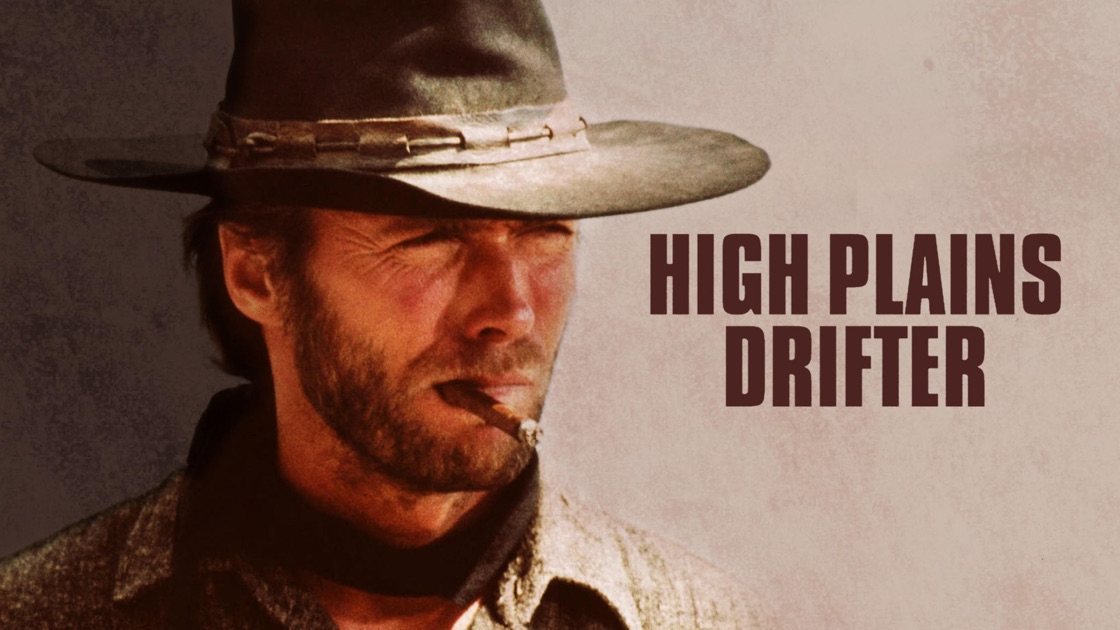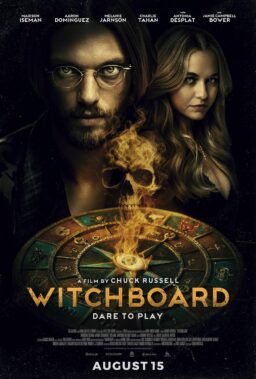You cannot accuse “High Plains Drifter” of being a case of bait and switch. The 1973 Universal Western, released 50 years ago this month, tells you what it is with its first scene. A stranger on horseback materializes in the punishing desert, the telephoto image distorted by shimmering waves of heat. Did this stranger really appear like a mirage, or was the heat playing tricks on us? The answer to that question comes from the eerie and unsettling score by jazz musician Dee Barton, which seems more appropriate for hallucinatory horror than a Western.
As always, the score is the window into the soul of the director, and, in this case, the director was Clint Eastwood, making his sophomore film as a filmmaker and his first Western as a director-star. “High Plains Drifter” can be read as a clear declaration of directorial intent. This was not like the Westerns of yesteryear (lore has it that Eastwood reached out to John Wayne after “High Plains Drifter” was released about collaborating, and Wayne informed him he would not work with the younger man because he was so appalled by the new Western and read it as an affront to his entire filmography). Nor is the film perfectly in line with other anti-Westerns of the day though the film shares the era’s frankness about matters of race and gender. Eastwood’s politics are notoriously complex: though a longtime Republican (now a registered Libertarian), his critiques of American society, especially along the lines of race and gender, have been pointed at times in a manner at odds with conservatism. But identity politics have never been the thematic engine of Eastwood’s work. What drives “High Plains Drifter” is key because it will become the auteurist throughline of Eastwood’s directorial body of work, which is now entering its sixth decade: An Old Testament preoccupation with sin, guilt, retribution, and (as he has aged) the possibility for atonement.
“High Plains Drifter” can be easily summarized in a way that makes it sound so generic as to be almost postmodern: a nameless stranger rides into town with a secret and ends up defending it against a trio of outlaws bent on revenge. The nameless, opportunistic, and anti-heroic Stranger, played by Eastwood, is clearly a riff on The Man With No Name, and the setup is reminiscent of Akira Kurosawa’s masterpiece “The Seven Samurai.” And yet, the script immediately goes to great pains to distance this story from those stories. The Stranger is just as competent with violence as The Man With No Name, but there’s an added level of viciousness we’ve never seen before. When The Stranger kills three men within minutes of riding into the lakeside town of Lago, there’s an element of subterfuge and excess to this, unlike in Eastwood’s earlier films. Sure, they were menacing him and “asking for it,” but when they get it, they get it in such a fashion that right away dispels any idea of classical heroism.

And then there’s the rape. Barely a minute after this triple homicide is committed in broad daylight, the town beauty antagonizes The Stranger. We expect the usual kind of hostile banter with a simmering sexual undercurrent that’s the life’s blood of Old Hollywood. But then the Stranger, after saying someone ought to teach her some manners, drags Callie Travers (played by Marianna Hill one year before she would be immortalized as Fredo’s similarly headstrong wife in “The Godfather, Part II”) into a nearby stable and rapes her. For many today, this will be your off-ramp. It is jarring to see the hero of your film commit an unambiguous act of sexual violence before the conclusion of the story’s exposition. But, again, Eastwood is letting you know upfront who this character is.
Two interesting points about the mise-en-scène during this rape scene. At one point, we notice the act has an audience: Mordecai (played by Billy Curtis, who once played a Munchkin in “The Wizard of Oz”), one of the few passably decent people in Lago, watches with prurient interest. Later, we will see the earlier brutal act of murder that sealed the town’s fate through his eyes, and I think it has to be noted that Mordecai’s spectatorship links these two acts. Eastwood also signals that this rape shouldn’t merely be written off as a roll in the hay by giving us a subjective shot from Callie’s point of view after the act. We look up at The Stranger, who towers over the camera. It underlines that this was about him asserting his power over her violently (as he did with the men minutes before), and it also asks us, the viewer, to see through the eyes of this woman who has just been brutalized. In this cultural moment of moral absolutes, this won’t be enough to justify The Stranger’s actions for contemporary viewers, but the film clearly understands the moral line that has been crossed.
Rather than jail The Stranger for either of these transgressions, the city fathers of Lago make him a proposition: If he will handle the pesky matter of three violently vengeful outlaws en route to Lago after a year of imprisonment, the town is essentially his. He can have anything he wants from any of the shopkeepers free of charge. The Stranger balks initially but agrees to train the townsfolk to defend themselves. And, in the meantime, he begins taking full advantage of his carte blanche, and not always in expected ways. When he witnesses the general store owner harassing an old Native American man with two boys, The Stranger lavishes each boy with his own jar of candy and gives the old man more blankets than he can carry. And we understand this not to be an act of virtue but an expression of his contempt for the hypocrisy of the townspeople.

This is what makes “High Plains Drifter” so interesting to watch in 2023: It’s about as bleak a portrait of the white man’s expansion into the American West as has ever been painted. And it paints this picture without the usual signifiers of this corruption. We do not see wanton violence against the indigenous population (as in 1970’s “Little Big Man”) or outlaws tormenting the salt of the earth white settlers. The film slowly reveals to us that the outlaws are coming back because they were betrayed by Lago when they brutally killed the town’s marshal Jim Duncan at their behest. Marshal Duncan had learned that the gold found by his fellow townsfolk was actually on government land; therefore, claiming the riches was tantamount to theft. Knowing Duncan to be morally unyielding, the good people of Lago arrange for him to be murdered. The outlaws, our putative villains, are actually exploited laborers. Marshal Duncan, the only person in town with the moral courage to object to the town’s theft, is killed by a bullwhip in front of the eyes of all in Lagos. Many of the best films are about the act of watching, but “High Plains Drifter” is uniquely preoccupied with perspectives and points of view. Lest we sympathize too much with the wronged assassins, Eastwood films a massacre they commit after being released from prison and shoots it from the murderers’ points of view. We are forced to see their crimes through their eyes in a way that says that the audience, like the townspeople of Lago, are complicit.
But what “High Plains Drifter” is known for is the subtle-but-not-too-subtle insinuation that The Stranger is the reincarnation of Marshal Jim Duncan (casting Buddy Van Horn to play the slain lawman was a deliberate tip of the hat to this since he and Eastwood bore a passing resemblance to one another). When The Stranger enters the town, which leads to a ballet of people staring at him and him staring back, he flinches at the sound of the whip being deployed on a team of horses. Duncan’s public execution by bullwhip (an instrument synonymous with the pain and cruelty of American slavery) resonates powerfully because, for me, it is clearly marked as a lynching.
Consider at this point that “High Plains Drifter” was written by Ernest Tidyman, who was not Black but is most well known as the author of the Shaft novels and the screenwriter for the two Shaft films directed by Gordon Parks. Tidyman said he was interested in creating a Black hero more in line with the Black people he knew in real life, neither a saint nor a white man’s hollow symbol. His interest was not limited to Black heroes; he published a non-fiction book entitled Dummy in 1974 about African-American deaf-mute convicted serial killer Donald Lang which was made into a 1979 TV movie starring LeVar Burton as Lang and Paul Sorvino as his hearing-impaired attorney. The teleplay was written by Tidyman and directed by Frank Perry.
Tidyman understood that any film considering American evil could not get too far from the specter of racism. And while there are no explicit references to anti-Blackness, the choice of the whip and the public nature of Marshal Duncan’s slaughter are whispering a truth that some ears can hear perfectly well, that the kind of violence routinely visited on Black men at that time could all too easily be turned on a white lawman if he forgot one of his twin directives: To protect capital and/or protect white supremacy.

This subtle allusion to race also dovetails with Clint Eastwood’s persona. This may seem strange if your first association with Eastwood is the actor who was so distressed by the possibility of a second term for President Obama that he spoke to an empty chair at the Republican Convention in 2012 (he has said the appearance is something he regrets), or the many years he spent training his iconic .44 Magnum on Black bodies as Dirty Harry Callahan. But if you know the Dirty Harry series well, attempts were always made to temper the violence against Black people with scenes of Harry enjoying camaraderie with African-Americans. Dirty Harry’s famous “Do you feel lucky punk” speech delivered to a wounded Black bank robber he held at gunpoint is immediately followed by Harry being treated by a Black doctor who grew up in the same neighborhood as Harry (“We Potrero Hill boys have to stick together,” the doctor says to Harry).
It is well known that Eastwood is a lifelong jazz devotee, and it has long been my view that this exposure to Black culture had a profound impact on Eastwood’s persona. He has, in essence, been performing Black Cool without being too obvious about it. That’s what has made his persona, his swagger, his ‘50s hipster mien, strikingly different from the likes of Wayne, Cooper, or Stewart.
Eastwood will never be labeled “woke” by the reactionaries of our day, but looking back on his career, he veers dangerously close to it. Before his recent period (where he became preoccupied with the most basic kind of American heroics in such a way as to pander to Obama-era malcontents), his filmography boasted a late-career run with Morgan Freeman, a flawed attempt to reckon with the racist undercurrents of his persona in “Gran Torino,” and even a film that details in no uncertain terms how wronged women have been silenced through institutionalization in “Changeling” (ironic given the deplorable treatment Eastwood doled out to his domestic partner Sondra Locke at the close of their romantic and creative partnership). His decision to make a companion piece to his largely stateside World War II film “Flags of Our Fathers” that focused solely on the doomed Imperial Japanese forces tasked with the mission of holding Iwo Jima was audacious. And because it was Clint Eastwood, no one cried foul, even when he was photographed directing that film wearing the field cap of the Imperial Japanese Army. Imagine the potential uproar if Spike Lee had been similarly documented.
If race is a subtle breeze blowing through “High Plains Drifter,” then gender is a howling wind. The rape of Callie Travers continues to resound in the story long after the act. The town’s indifference to this act is just one more example of its moral turpitude, even though Callie herself (who watches the brutal murder of Marshal Duncan with a flicker of sadistic arousal) is part of the corruption. Only Sarah Belding, the wife of the local hotel owner (played by the late Verna Bloom), seems to be above the rest of the town, which is why it’s especially rich that when The Stranger rides into town, Sarah is shown watching him from the second floor of the hotel, from a higher vantage point than every other person in town.

Sarah, aware of The Stranger’s rape of Callie, expects the same treatment when he takes her to his bedroom. But he demurs until she throws herself at him. Sex with The Stranger seems to lead to a moral awakening for Sarah and causes her to confess the town’s original sin. As he turns to leave her in the morning, she says: “Be careful. You’re a man who makes people afraid, and that’s dangerous.” He replies in that iconic Eastwood way: “Well, it’s what people know about themselves inside that makes them afraid.”
At this point, The Stranger orders the townspeople to paint Lago red, in essence literally rechristening it as Hell before the final conflagration (which is beautifully shot in Panavision by the late great cinematographer Bruce Surtees). He forces the denizens of Lago to shed the hypocrisies of law and order and faith and God to become honest for just one moment about whom they truly serve.
Half a century later, some of the country seems ready to embrace what the townspeople of Lago struggle to ignore. Eastwood and Tidyman understood the ugly truth buried beneath the mythology that the Western, above all other American genres, promoted and enshrined. The Stranger avenges the murder of Marshal Duncan by killing the assassins and almost destroying the town, but the lie that Duncan was killed to protect stands intact as he dematerializes in the desert. Despite their ordeal at the hands of the outlaws and The Stranger, the people of Lago who survived the killing will enjoy their ill-gotten gains.
That truth is what elevates “High Plains Drifter” to the peak of the genre. It was a bold announcement from Eastwood, a man obsessed with how fear can turn men into evil. Fifty years later, it has lost none of its lacerating power.
Now streaming on:












